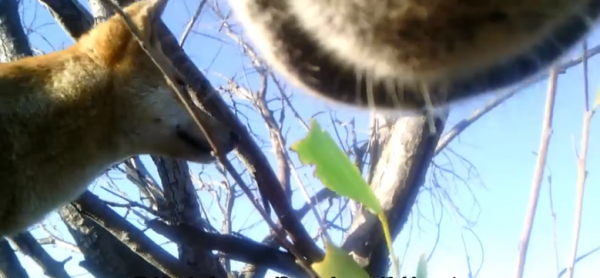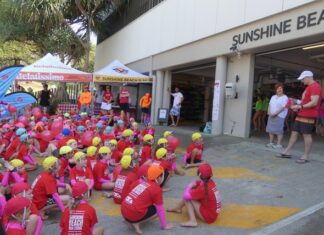
The Department of Environment and Science (DES) have released world-first footage downloaded from a camera worn by a Fraser Island dingo (wongari).
If you have ever wondered how a dingo spends their time, this footage has the answer.
According to the series of videos collected, a Fraser Island dingo eats midgym berries, goes for long walks in the bush and on the beach, visits a township and spends plenty of time with his mate.
Ranger in charge Linda Behrendorff said the tracking collar captures 30 seconds of footage every 15 minutes and provided crucial insight into the movements of wongari around the island.
“The camera and tracking collar, developed by LOTEK, has uncovered the secret lives of wongari on K’gari (Fraser Island),” Ms Behrendorff said.
“This is superb footage and shows us where the wongari goes, how and where he finds food and water and gives us an intimate view of the time he spends with his mate.
“For almost a month, the camera collar captured footage of the wongari and tracked him travelling hundreds of kilometres throughout the northern part of the island.
“We can see him and his mate loitering at the Orchid Beach township and being photographed by residents or visitors.
“There’s a scene where he’s eating berries in the bush and fish on the beach and another scene where he’s eating alongside his mate in bushland.
“The vision shows the wongari and his mate high in the dunes and looking down on the beach, running through the bush, around inland water bodies, along the tracks and waking up in the morning together.
“We have never seen anything like this before, and it shows that wongari are opportunistic feeders, taking advantage of any food source they find.”
Ms Behrendorff said the Queensland Parks and Wildlife Service (QPWS) fitted tracking collars to two wongari following several incidents at the Orchid Beach township.
“Tracking collars are one of a number of management techniques we use to monitor wongari after increased risks of negative interactions or incidents with residents or visitors to the island,” she said.
“It’s obvious from the footage that the tracking collar doesn’t cause issues for the wongari, in terms of feeding, moving about the island and interacting with his mate.
“The collar features an inbuilt drop-off mechanism that releases after a set period of time, which allows rangers to track it and retrieve it.
“Since 2011, QPWS have regularly used tracking collars on K’gari regularly to monitor the movements of wongari to help us develop better management programs, including people management.
“The use of tracking collars is approved by an independent Animal Ethics Committee, and they are used around the world to assist wildlife authorities to manage animal/human interactions.”
QPWS remains committed to working closely with the Butchulla Peoples in the management of K’gari’s iconic wongari and its World Heritage renowned natural and cultural values.
Visitors to K’gari are reminded to be dingo-safe at all times:
• Young children must be kept within arm’s reach at all times.
• Walk in groups.
• Camp in fenced areas where possible.
• Do not run. Running or jogging can trigger a negative dingo interaction.
• Never feed dingoes.
• Never store food or food containers in tents.
• Secure all rubbish, fish and bait.
• Walk with a stick.
For camera collar vision, visit:
dropbox.com/sh/7585opi3paqx5ir/AAAjykVJtiUrlmXKvzjFgWZja?dl=0






